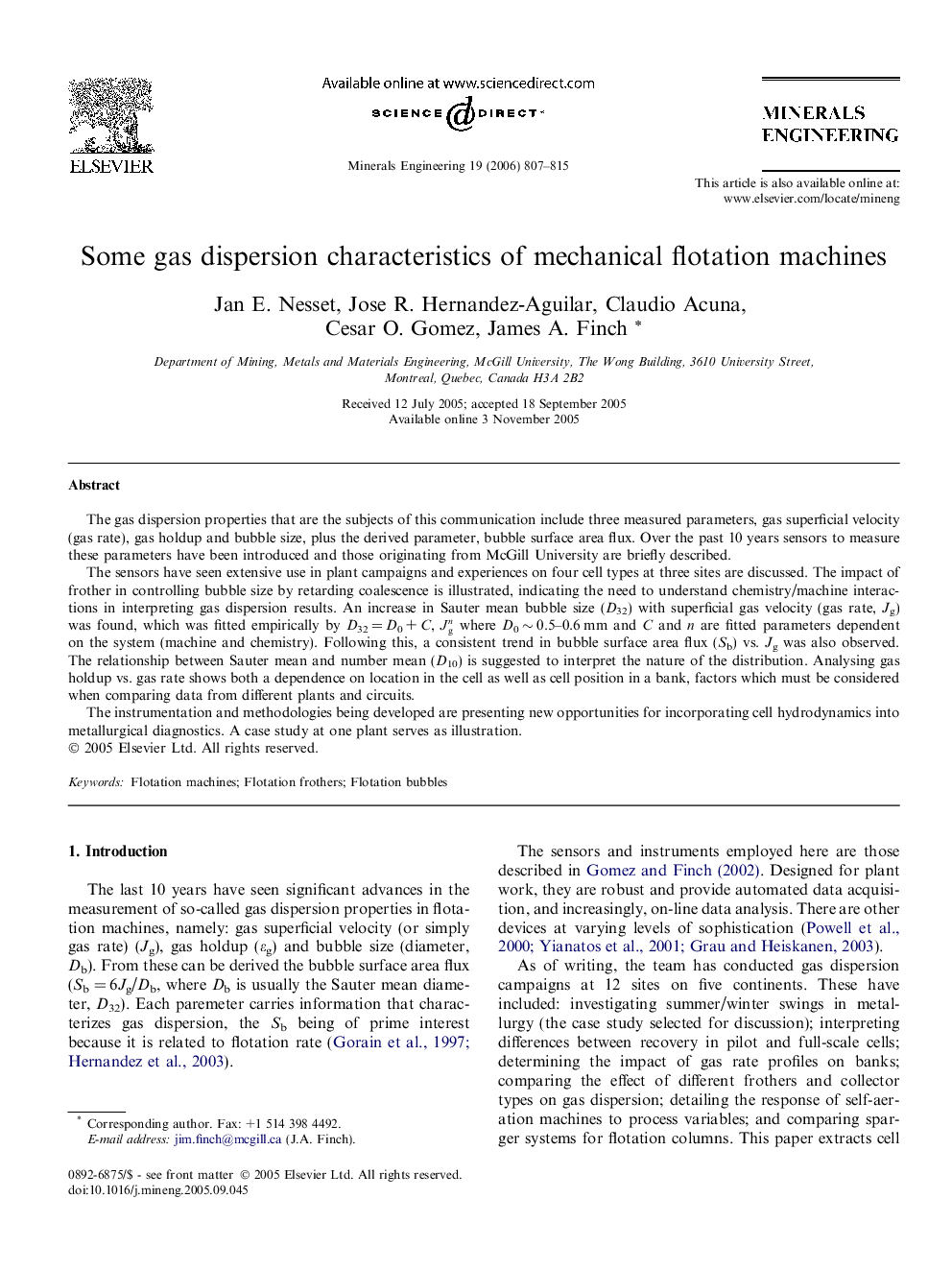| Article ID | Journal | Published Year | Pages | File Type |
|---|---|---|---|---|
| 234585 | Minerals Engineering | 2006 | 9 Pages |
The gas dispersion properties that are the subjects of this communication include three measured parameters, gas superficial velocity (gas rate), gas holdup and bubble size, plus the derived parameter, bubble surface area flux. Over the past 10 years sensors to measure these parameters have been introduced and those originating from McGill University are briefly described.The sensors have seen extensive use in plant campaigns and experiences on four cell types at three sites are discussed. The impact of frother in controlling bubble size by retarding coalescence is illustrated, indicating the need to understand chemistry/machine interactions in interpreting gas dispersion results. An increase in Sauter mean bubble size (D32) with superficial gas velocity (gas rate, Jg) was found, which was fitted empirically by D32 = D0 + C , Jgn where D0 ∼ 0.5–0.6 mm and C and n are fitted parameters dependent on the system (machine and chemistry). Following this, a consistent trend in bubble surface area flux (Sb) vs. Jg was also observed. The relationship between Sauter mean and number mean (D10) is suggested to interpret the nature of the distribution. Analysing gas holdup vs. gas rate shows both a dependence on location in the cell as well as cell position in a bank, factors which must be considered when comparing data from different plants and circuits.The instrumentation and methodologies being developed are presenting new opportunities for incorporating cell hydrodynamics into metallurgical diagnostics. A case study at one plant serves as illustration.
